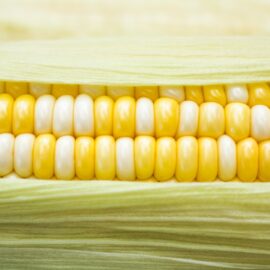

This article gives you a glimpse of what you can learn with Shortform. Shortform has the world’s best guides to 1000+ nonfiction books, plus other resources to help you accelerate your learning.
Want to learn faster and get smarter? Sign up for a free trial here .
Have you thought about getting a dog in the past couple of years? Why are dogs so expensive at the moment?
If you thought the pandemic was the best time to buy a puppy, you’re not alone. During the past few years, dog sales spiked dramatically. As the law of supply and demand tells us, when something is in-demand, prices go up. This affected every part of the dog-owning industry, from food to vet care to the dogs themselves.
Here’s what you need to consider before buying a puppy in 2022.
COVID-19’s Effect on Puppy Prices
Why are dogs so expensive since the pandemic? Back in March 2020, when the United States began to undergo lockdown, many assumed it would only last a couple of weeks. But then weeks turned into months and people were stuck in their homes and working alone. Children also went without any social interaction with people their age since they were taking online classes. To make up for the lack of in-person meetings and connections, people opted for dogs instead.
Dog breeders who would get an average of 10 inquiries about puppies a day began to get more than 100 a day during the pandemic. The American Pet Products Association (APPPA) reported that in 2020 alone, pet ownership in the United States rose from 67% of households to 70%. Taking up the majority of those numbers are Generation Z and Millennials, who are more likely to be pet owners and spend more money on their pets than any other generation, the APPPA also reported. The statistics don’t stop there: the percentage of people who got a pet from May 2020 to February 2022 rose from 7% to 14%.
Dog breeders who still had puppies left took advantage of the increased demand for dogs to make a larger profit. They raised their prices to compete within the dog-buying market, and people were still paying these prices due to the stress of the pandemic, which many thought puppies could help with. However, the prices didn’t go up just because breeders wanted to exploit people’s desperation for a furry companion. There was also a shortage of dogs because of the high demand for them. Des Kehoe, the vice president of Dogs West in Australia, also says that breeders have to raise their prices to make their dogs more impressionable. If breeders don’t charge their dogs at a higher price than their competitors, then people might be skeptical that they won’t be receiving a “good product.”
Breeding Is Expensive
Even before the pandemic, breeding dogs was expensive. According to Cosmopolitan Dogs, a home-based breeder for foundation-trained and allergy-friendly dogs, many factors make breeding cost more than adopting a pet from a shelter. Some of these factors are:
- It cost $2,000 or more for the health testing of parents (the dogs that are being bred)
- If a C-Section is required (this occurs with bulldogs and French bulldogs), that adds $600 to $1500 per litter.
- The cost of a puppy depends on the bloodline and the health of the parental lines (for instance, Poodles are more expensive than other breeds because they’re hypoallergenic and can go for $5,000 or more)
- Home-based breeding costs more because it produces healthier puppies
- The cost of supporting dogs throughout the non-breeding season (feeding and veterinary visits)
- Breeders have to take care of the litter before they’re old enough to separate from their mother. This includes around-the-clock training, socialization, and sometimes hiring on-sight dog trainers.
- Vaccinations, microchipping, genetic testing, and veterinary visits
All of these factors must be taken into consideration when breeding and buying a dog. Breeders have continuous expenses that occur throughout the year that they need to offset in order to turn a profit.
More Expensive Dog Breeds
Above, we learned that Poodles are more expensive because they’re hypoallergenic and in high demand. However, allergies aren’t the only reason some dogs are higher in price than others. Let’s look at a few more reasons some puppies have always been higher in value:
- French bulldogs can only have, on average, one to three puppies per litter and are a popular dog breed to own. They also suffer from many health issues due to crossbreeding throughout their history.
- Golden retrievers cost more depending on the color of their coat. Golden retrievers with cream or black coats are rarer and often closer to $3,000 ($3,900 after the pandemic). They also make quality show dogs.
- Pugs and Samoyeds are “fashionable” dogs that are bred to be good companions and win at dog shows.
Seeing how valuable they are, these purebred puppies are less likely to be found in shelters and can usually only be obtained through pricey breeders. With these dogs still high in demand, it’s unlikely that dog prices will be reduced anytime soon.
Consequences of Increased Dog Prices
Lockdown isn’t in effect anymore, and the world is slowly returning to normal after the pandemic, but the dog industry is still facing the consequences of the spike in interest in dogs. The increased costs overall are still as high as ever, and taking care of pandemic dogs is a costly effort.
Inflation in the United States is affecting everyday expenses, such as groceries and gas, but pet owners have to worry about how inflation is affecting the cost of pet food. Annual inflation for pet food reportedly rose by 3.7% in February of 2022 and pet services that include pet care rose by 5.8%. Despite these spikes, pet owners are still willing to pay extra money for nutritional and fresh-ingredient food for their pets.
The Humane Society has also warned against buying dogs from puppy mills because of numerous documented cases of mistreatment of animals. These cases describe dogs being left in filthy conditions, covered in their own excrement, and placed in extreme cold or heat. These situations worsened when agencies had to pause inspections of puppy mills due to the pandemic, but the puppy mills were still breeding dogs to sell to pet stores when the demand for dogs was high.
The Alternative to Buying Puppies
There’s an alternative to buying expensive puppies from pet stores or breeders: rescue shelters. Since people have gone back to on-site work and school after the lockdown was lifted, many pandemic dogs have been given up for adoption because owners didn’t have the time or money to take care of them anymore. Another cause of the high number of dogs in shelters is that many pandemic dogs suffer from separation anxiety, making them especially destructive and difficult to care for.
Ethically, it’s a much more suitable option to adopt dogs from shelters that are looking for permanent homes. It’s also much less expensive than buying from breeders and you don’t have to worry about spaying or neutering your dog (because most shelters do that for you).
There’s also the option of fostering dogs temporarily if you’re not sure if you’re ready to permanently adopt. It helps shelters maintain the capacity of animals they can hold so they can accept more dogs, and dogs get to wait in real homes until they are adopted.
What to Consider Before Adopting/Buying a Puppy
Whether you’re adopting or buying a puppy, you have to consider if you’re in a good place in your life to take care of a dog. Dogs aren’t accessories and must be emotionally, physically, and financially taken care of. A few factors to look into before taking in a furry friend are if you have the time to look after them, if you’re financially stable enough to cover their needs, and if you’re in this for the long run. A dog may only be in a short part of your life, but you will be in their life forever.
Have you recently adopted or bought a puppy? Let us know what your experience was like in the comments below.

Want to fast-track your learning? With Shortform, you’ll gain insights you won't find anywhere else .
Here's what you’ll get when you sign up for Shortform :
- Complicated ideas explained in simple and concise ways
- Smart analysis that connects what you’re reading to other key concepts
- Writing with zero fluff because we know how important your time is






